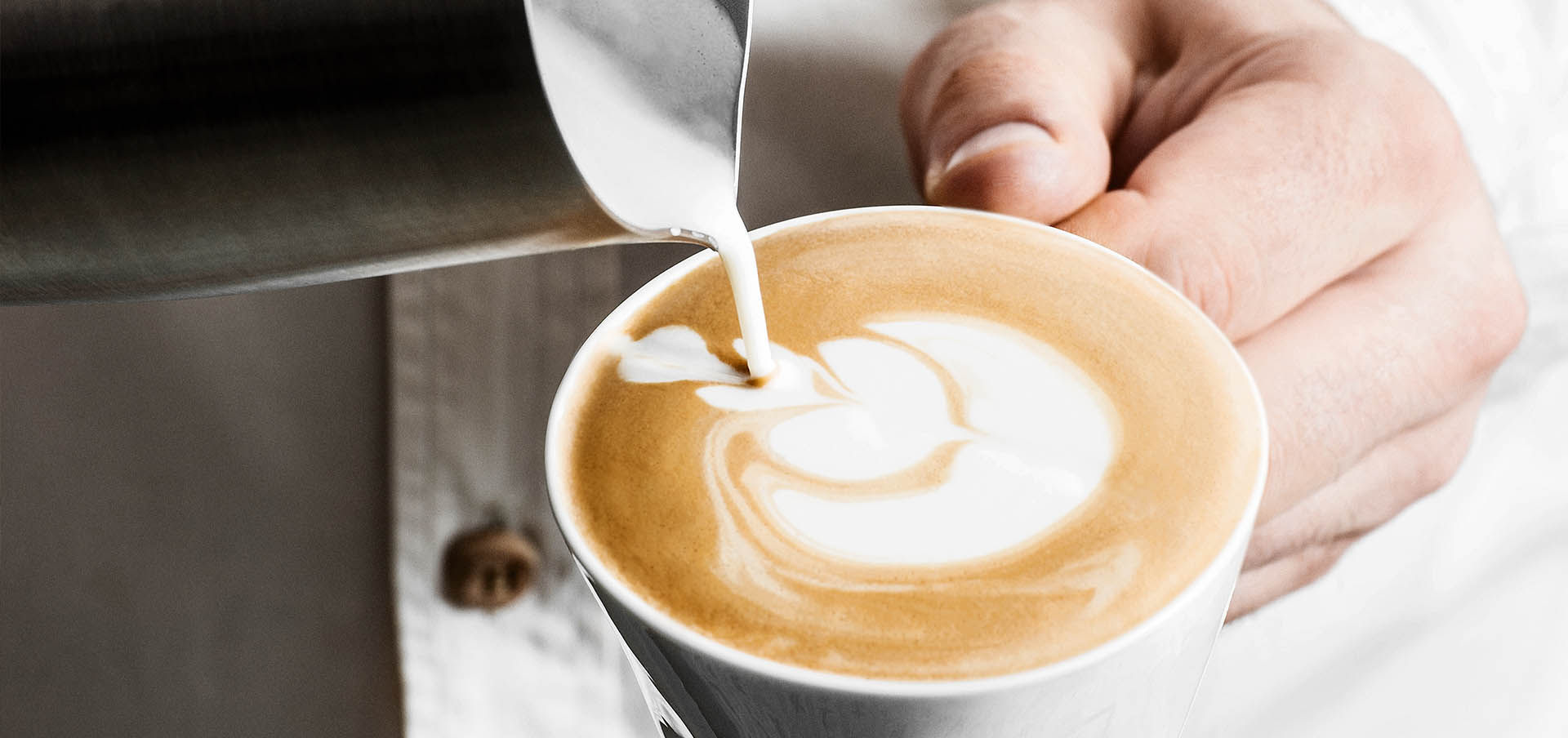Milk frothing is dependent on the fat content of the milk, as well as its temperature. The higher the fat content and warmer the temperature, the better it will foam. Whole milk has a higher fat percentage than skim or 2% milk and will therefore create more foam when heated.
Heating up your milk to about 140 degrees Fahrenheit is key for optimal foaming properties. After that, use an electric whisker to blend in air bubbles into your hot milk until you’ve achieved a creamy consistency with lots of airy peaks and valleys—this indicates that you have achieved maximum frothiness!
What’s The Best Milk To Use For Froth?
When it comes to frothing milk for use in coffee drinks, not all milks are created equal. For the best results, a barista should look for a high-fat content cow’s milk such as whole or 2%. These types of milk will create better foam and allow you to create latte art designs more easily.
Additionally, if you’re looking for vegan options, oat and soy milks also work well when frothed!
Best Milk for Frothing Latte
When it comes to finding the best milk for frothing latte, there is no one-size-fits-all answer. The type of milk you choose will depend on your personal preference and what kind of texture and foam you’re looking to create. Generally speaking, whole milk (or dairy alternatives like oat or almond) provide the richest flavor, creamiest texture, and most impressive amount of foam when frothed.
If you want a lighter version with a lower calorie count then skimmed or semi-skimmed are great options too. Try experimenting with different milks until you find the combination that works for you!
Best Milk to Froth for Cappuccino
When it comes to frothing milk for cappuccino, whole milk is generally the best option. Whole milk has a higher fat content than other types of dairy, which gives it more volume and texture when frothed. This allows for a thicker foam that will not disappear quickly in your hot drink.
Keep in mind that you may need to experiment with different brands of whole milk depending on where you live as some milks may be better suited for steaming or frothing than others.
Best Milk for Frothing Nespresso
Whether you are a fan of lattes, cappuccinos or any other type of espresso-based beverages, having the perfect milk for frothing is essential. Nespresso has made it easy to get just the right creaminess and microfoam with their specially formulated “Nespresso Milk Frother” that works perfectly with their machines. The best milk choices for this are fat-free, low-fat and whole milks as they will create the most stable foam without becoming too thick when heated.
With these options, you can enjoy a delicious cup of coffee in no time!
Does Almond Milk Froth
Yes, almond milk does froth. It’s a great non-dairy alternative for those who are looking to make vegan and lactose-free cappuccinos and lattes. Almond milk is naturally lower in fat than dairy milk, which makes it perfect for creating creamy foam.
When steamed, almond milk develops a thick layer of foam that can be used as a topping on specialty coffee drinks or blended into hot chocolate or chai tea lattes!
Best Non Dairy Milk for Frothing Nespresso
When it comes to making the perfect frothy latte with your Nespresso machine, almond milk is a great non-dairy option. It has a creamy texture that gives you nice foam and foamy bubbles when steamed or frothed. Additionally, almond milk is rich in healthy fats and vitamins which are beneficial for our health.
Furthermore, its mild flavor won’t overpower the flavor of your espresso shot like some other plant-based milks can do. For all these reasons, almond milk is arguably the best non-dairy choice for frothing up lattes with your Nespresso machine!

Credit: www.nespresso.com
What Milk is Best for Froth?
When it comes to frothing milk, the type of milk you use can make a big difference in the quality and consistency of your froth. The best types of milk for frothing are those that contain higher fat levels such as whole, 2%, or heavy cream. These milks produce thicker foam with smaller bubbles due to their higher fat content.
Non-dairy options like almond, coconut, macadamia nut and soy milks also work well when foaming but may not be able to achieve the same level of thickness as dairy varieties. Additionally, these non-dairy alternatives often require more effort and practice in order to get them just right.
What Milk is Easiest to Froth?
Whole milk is generally considered to be the easiest type of milk for frothing, as its higher fat content provides a richer texture and foam than other types of milk. However, almond, coconut, or oat milks can also be used with good results. The key is to use a cold version of your chosen dairy-free alternative; this ensures that the resulting foam will have more body and hold its shape better when poured into drinks.
When using any kind of non-dairy alternative for frothing, it’s also important to choose one that has been fortified with calcium in order to create an optimal foaming experience.
Does Oat Or Soy Milk Froth Better?
Oat milk froths better than soy milk, as it contains more proteins and fat. Its slightly sweet taste also makes it a great choice for people who want to create their own latte or cappuccino at home. Oat milk is higher in carbohydrates than soy milk, which helps to provide the necessary foam stability when heated.
Soy milk on the other hand is lower in fat and protein content, so while it can still be used for frothing purposes, oat milk will produce a fluffier foam with greater consistency.
Why Does Some Milk Froth Better Than Others?
The ability of a particular type of milk to froth depends on its fat content and protein composition. Whole milk with higher levels of fat will produce more foam, while low-fat milks are not as effective for frothing. The proteins in the milk also play an important role; some proteins have molecules that capture air bubbles better than others, making them ideal for creating thick, creamy foam.
Additionally, using cold or chilled milk when preparing your brew helps create a thicker and longer lasting foam than warm or room temperature milk.
Conclusion
In conclusion, the type of milk used for frothing can make a big difference in the quality of foam that is created. Dairy milks such as whole and 2% will provide the most volume and texture to your latte art. Oatmilk may be easier to work with for beginners because it does not separate or curdle when heated.
Non-dairy substitutes such as almond and coconut milks require more skill because they do not produce much foam on their own. Regardless of which type you choose, practice makes perfect so don’t give up if you don’t get it right away!

Alessandra Sarria is not only the creator but also a writer and editor of Best Cooking Things. He does most of the cooking at home. His friends and family members look forward to eating the delicious creations. He loves to cook. So he often writes about the problems or questions that arise while cooking at home. So that others do not get into trouble. One of the best ideas about which cooking tools are best can be found in his writings. From his own experience, he highlighted how different cookwares are.
